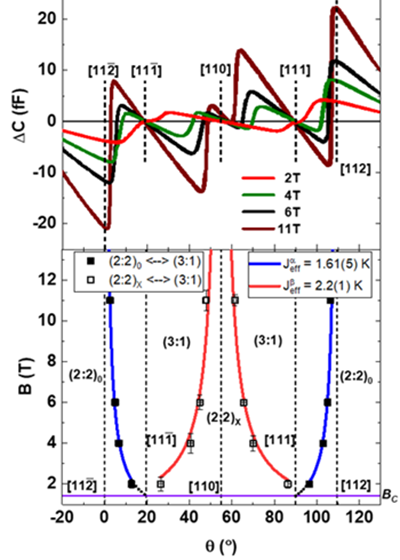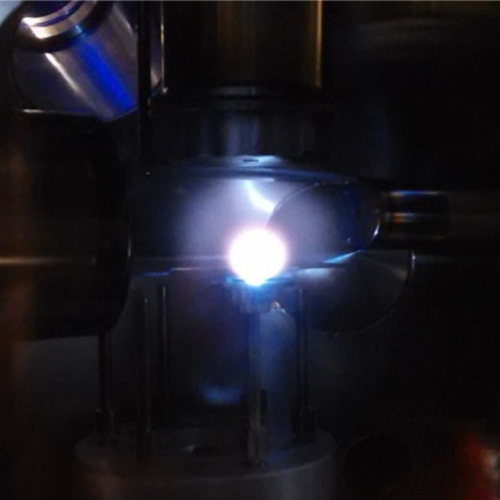
Dr. Christianne Beekman, Associate Professor
Physics and NHMFL
Education and Training:
- 2005: MS in Physics, Leiden University (The Netherlands)
- 2010: PhD in Physics, Leiden University (with Jan Aarts)
- 2010-12: Postdoctoral Scholar, University of Toronto (with Kenneth Burch)
- 2012-14: Postdoctoral Scholar, Oak Ridge National Lab (with Hans Christen & Thomas Ward)

When did you join FSU? What made you choose your university to build your research program?
I joined FSU in August 2014. After my roughly four-year postdoc stint in Toronto and Oak Ridge, I applied broadly to faculty positions at institutions with a strong track record in condensed matter physics. With three job offers in hand, I chose FSU because of its unique resources. The presence of the Maglab in Tallahassee with a critical mass of established researchers working in the field of strongly correlated electron materials made selecting FSU a no-brainer.
When did you become interested in quantum research? Who or what inspired you?
Quantum research is a very broad term. I am mainly interested in strongly correlated electron systems, i.e., systems in which fundamental and functional properties can be tuned via small changes to the crystal lattice. Moreover, ever since I was an undergrad I have been interested in thin film research. In thin films, epitaxial strain is used to control interatomic distances in quantum materials providing a knob to tune macroscopic physical properties. During my PhD and beyond, I was fortunate to develop this interest in various research groups around the world.
What are your current research interests? Could you give an example of some recent result that you feel especially passionate about?
Strongly corelated electron systems which show magnetic frustration. My passion is about manipulating ground state physics and functional properties of quantum materials by tweaking their crystal structures. This can be done by growing thin films on suitable substrates or through chemical pressure. My group grows these thin films using pulsed laser deposition (our PLD system is shown in the photo).

I love using established measurement techniques in new ways. One example is the use of torque magnetometry to map the magnetic phase diagram of spin ices. Traditionally, torque is used to map out the magneto-crystalline anisotropy. However, in materials with strong single ion anisotropies it can be used to characterize field-induced transitions between noncollinear spin textures. My group benchmarked the technique to study the spin-spin correlation strength in spin ice single crystals and thin films. (In the figure, we show torque response with the field constrained to rotate within the (1-10) crystallographic plane (top) and phase diagram (bottom) as a function of field direction. Fits are used to extract the spin correlations strengths for the two magnetic sublattices.) I try to push the measurement techniques to their limits, as I try to measure volumetrically small samples to study if and how the physics of quantum materials changes near surfaces and interfaces.
How would you describe your research to general public? Why is your topic important?
Today's high-tech society relies heavily on electronics such as computers, which use the movement of charge (electrons) to function. Magnetic materials utilize another attribute of the electron, its spin. I am interested in materials where spins decorate crystal lattices with triangul ar shapes. As a result, the spins cannot make up their minds in which direction to point. This allows the material to not adopt just one state but rather fluctuate between many available states. The "spin flips" associated with these fluctuations can be regarded as particles that transport spin information across the lattice. One question is whether these spin flips can be used as information carriers in future generations of information technology, such as quantum computing. My group synthesizes these ex otic magnets in thin film form at the Maglab. We do this by blasting home-made powder pellets with a very strong laser (see the figure); the created plasma is directed towards a substrate. We choose substrates to intentionally alter the periodicity of the crystal lattice to see how the magnetism is affected.

What do you think about the future of quantum research? How can FSU contribute to that future?
Nationwide, the number of quantum centers is on the rise. If we want to keep up with the rest of the nation and the world, the time for FSU to vigorously pursue quantum initiatives is now. I believe FSU has a critical mass in quantum materials discovery. If we collaborate and leverage unique resources, such as the Maglab, we can position FSU at the forefront of quantum materials synthesis and characterization.
What are your interests outside of research? What do you like to do in your free time?
I spend a lot of time with my infant son and my husband. I love going for long hikes/walks with them and taking pictures of wildlife. I also enjoy indoor rock climbing and homebrewing beer although it has been tough finding time to pursue these hobbies.

